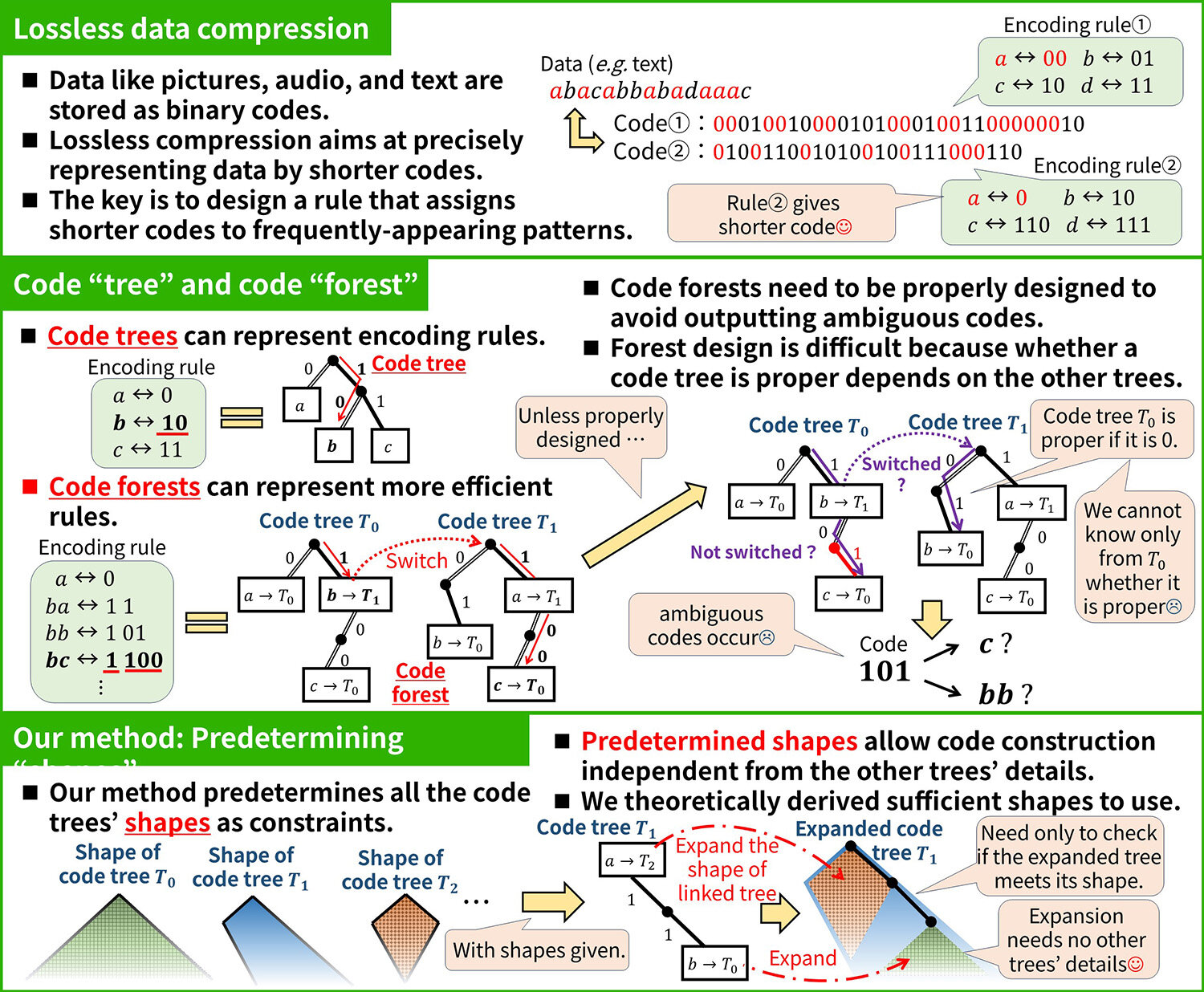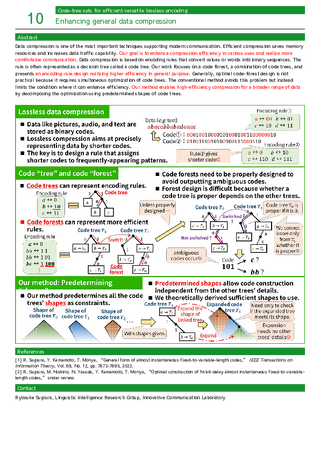| 10 |
Enhancing general data compressionCode-tree sets for efficient versatile lossless encoding 
|
|---|
Data compression is one of the most important techniques supporting modern communication. Efficient compression saves memory resources and increases data traffic capability. Our goal is to enhance compression efficiency in various uses and realize more comfortable communication. Data compression is based on encoding rules that convert values or words into binary sequences. The rule is often represented as a decision tree called a code tree. Our work focuses on a code forest, a combination of code trees, and presents an encoding-rule design realizing higher efficiency in general purpose. Generally, optimal code-forest design is not practical because it requires simultaneous optimization of code trees. The conventional method avoids this problem but instead limits the condition where it can enhance efficiency. Our method enables high-efficiency compression for a broader range of data by decomposing the optimization using predetermined shapes of code trees.

[1] R. Sugiura, Y. Kamamoto, T. Moriya, “General form of almost instantaneous fixed-to-variable-length codes,” IEEE Transactions on Information Theory, Vol. 69, No. 12, pp. 7672-7690, 2023.
[2] R. Sugiura, M. Nishino, N. Yasuda, Y. Kamamoto, T. Moriya, “Optimal construction of N-bit-delay almost instantaneous fixed-to-variable-length codes,” under review.
Ryosuke Sugiura, Linguistic Intelligence Research Group, Innovative Communication Laboratory




